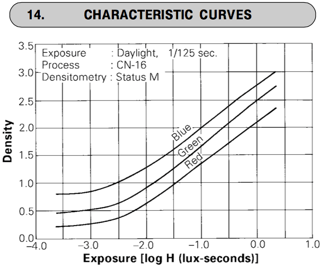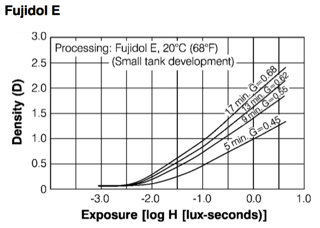Setting aside the filtration that you will need to do to try to get the color casts of the color negative into the image... lets look at the density of the negatives - how much light shines through them and how clear they are.
So that I get relatively consistent data sheets, I'm comparing Superia 200 with Neopan 100 - both made by Fuji.
The color film has a dye density that varies with wavelength of light (the colors in the film itself), but you can get an idea of what the density range of the film is:

The density of the film is going to be mostly something between 0.5 and 2.0. There is nothing that is at 0.0 (clear). And its also not a nice curve by any stretch of the mind. This isn't a problem for color paper - its designed for the dyes at specific densities and wavelengths.
There is also the density curve of each color:

Note there that the density for each color is different, and has a different toe shape.
On the other hand, black and white film is a bit more sensible.

I want to point out that the density range of black and white film is greater than the density range of color negatives. This means that you will have some adjustments to do there.
You will not get the same range on the paper from color negatives as you would on black and white negatives. The information just isn't there.
Next, one of the big gotchas is that the filter to correct for the orange cast to the negatives is very close to the safelight color. This makes it hard to get that information into the paper.
Overall, you are going to end up with a rather flat print with little contrast when printing to black and white paper.
Reading some old forum posts on photo.net such as Printing of color negatives to B&W paper? and Panchromatic paper? (the paper you are after was known as Panalure - discontinued in 2003) there isn't much interest in making the paper and the general consensus is to just scan and print from there.
You can try with various modern papers and various filter packs to see what works best for your negatives. Remember that the wet darkroom is where the interpretation of the negative is done. What works for one person with a paper and a given negative may or may not work for you. You are likely going to spend a (un?)reasonable bit of time trying to get your prints done that way.
Now days, I'd scan it, do the interpretation in photoshop and print on an appropriate printer.




